https://www.pewpewtactical.com/wp-content/uploads/2021/03/Parent-Bug-Out-Bag-12-2048×1536.jpg
If there’s one place you don’t want something bad to happen, it’s when you’re 20 miles into the woods, and there are no signs of civilization anywhere.
The woods aren’t exactly an inherently safe place.
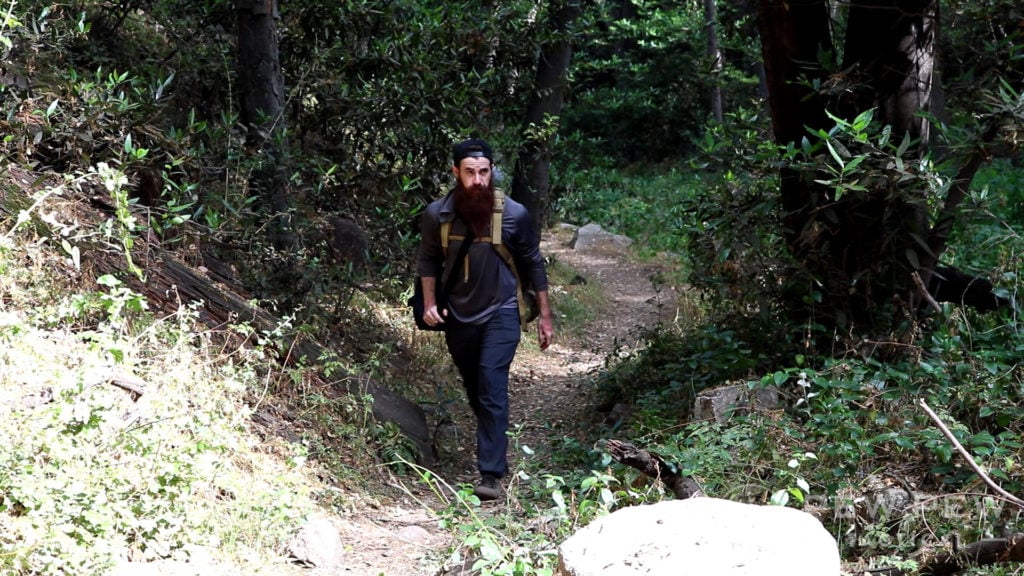
That’s not to say that you’re walking into a green death trap every time you hit a trail, but it is to say that nature (and people) can be a beast.
As such, it’s best to be prepared to face whatever curveball may get thrown your way.
Unfortunately, I’ve spent enough years in the woods to see people placing themselves in bad situations.

But having a bit of pre-planning in place means the difference between life and death.
Out in the woods, you’re truly on your own, and you need to be able to do what it takes to keep yourself alive.
Thankfully, there are a number of steps that we can take to ensure that we’ve done what we can to stay safe as we enjoy the beauty of the woods.
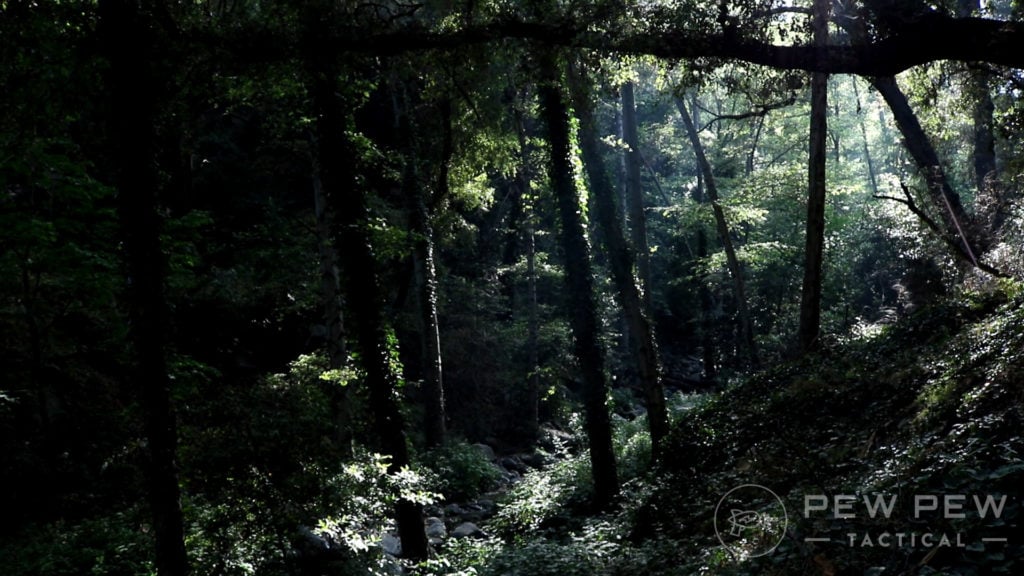
And guess what – we’ve narrowed down some of this advice for you.
So without further ado (sorry, I’ve been reading Shakespeare lately), here are the top tips to consider before your next hike.
Ways to Stay Alive on Hikes
1. Tell Someone Where You’re Going and When You’ll Be Back
Arguably, this is one of the most important things you can do to stay alive while out in the woods.
If you’ve ever seen 127 Hours — that movie where the guy has to cut his arm off with a dull multitool knife– it was the violation of this principle that caused such a drastic decision and outcome

I really have no problem with people hiking solo.
That’s the whole reason to go out in the woods in the first place, is it not? To get away from people?
But by always telling somebody where you’re going, and an approximate time you’ll be back home, followed by a quick message once you get back home you’ll have maintained a very important lifeline for yourself perchance something should go wrong.
If nobody knows where you’re at, then nobody will come for you.
2. Pack Some Food and Water
This is a pet peeve of mine.
If you’re going to go out in the woods – even for a really quick day trip – at least bring some water and perhaps a granola bar with you out there.
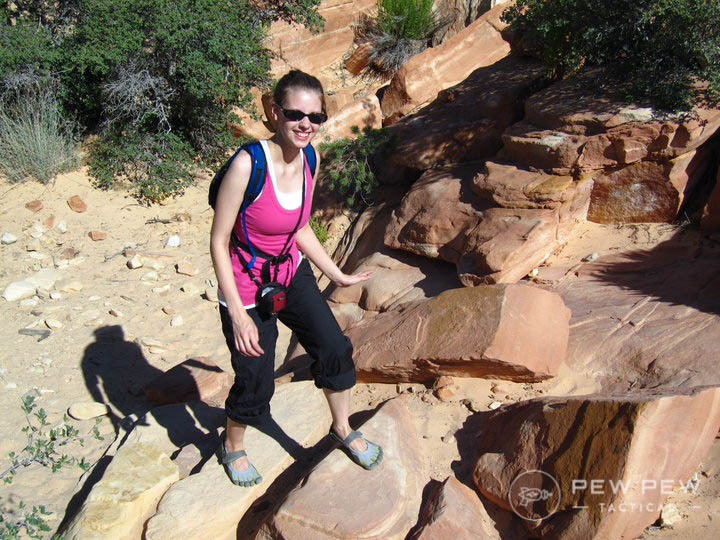
I know that the idea of not having anything to carry seems appealing, but water, in particular, could potentially save your life.
We tend to underestimate Mother Nature when we go outside. And an incredibly hot day of hiking can dehydrate you very quickly.
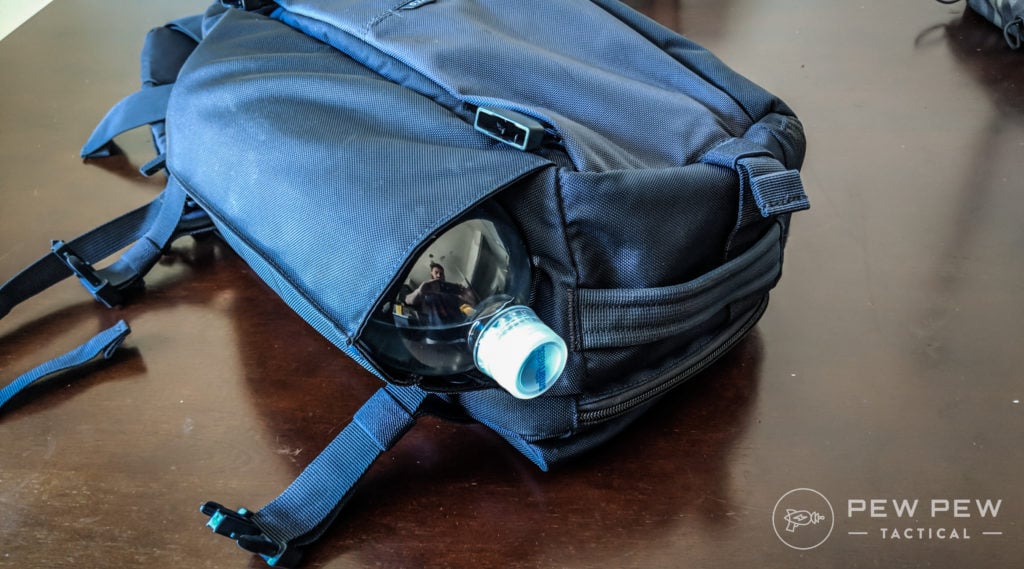
This, in turn, can lead to some brutal headaches, an inability to make good decisions, and eventually, heat exhaustion or heat stroke.
Going out into the woods for relaxation and then ending up miserable because you couldn’t bring something as simple as a water bottle rather defeats the purpose.
3. No Cotton!
“Cotton kills” goes the famous backpacking adage. And there’s a good reason for that.
Once cotton gets wet, it completely loses any insulative qualities that it had prior. You may as well be walking around naked.

Aside from the weather often changing very quickly while you’re out in the woods, there’s also always the chance of slipping during a stream crossing or some other similar water accident.
By wearing clothes made of nylon, polyester, or some other water-resistant material, you’ll be much safer while you’re out.
4. Bring a Flashlight
Personally, I enjoy hiking at night. The peace of the woods is incredible in the dark, the stars are like nothing you’ve ever seen, and it’s just fun.
However, a lot of people end up night hiking by accident.
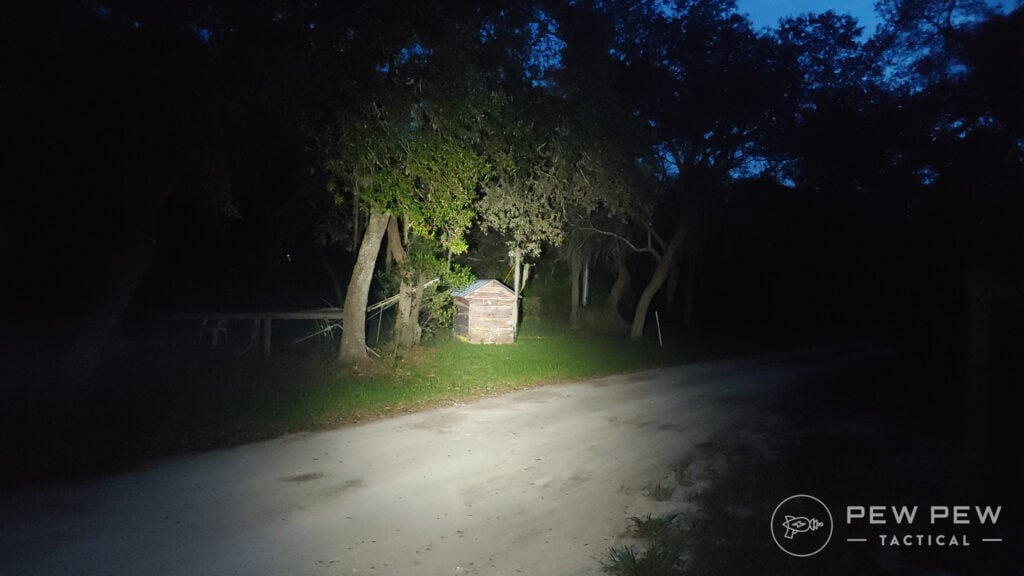
What I mean by this is that mountains and trails can often be rather deceiving. What we think should only be a 3-hour hike where you will be back home in time for dinner can easily turn into a 5-hour hike where you don’t get home till well after dark.
There’s nothing wrong with this but attempting to hike in the dark without a flashlight is a good way to end up breaking an ankle.
So, make sure that you have a flashlight of some sort with you when you go out in the woods. Better yet, bring a headlamp.
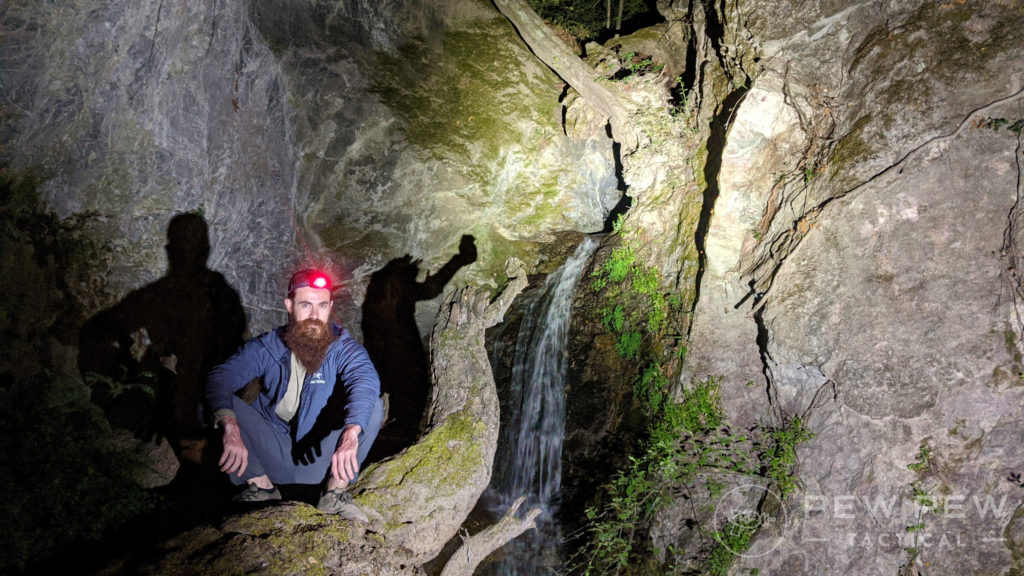
This will leave both of your hands-free for trekking poles or supporting yourself on nearby trees as you climb and descend.
5. Don’t Do Stupid Stuff
Being safe should be a given.
But while out in the woods, I’ve witnessed a girl attempting to catch a baby bear and even somebody hanging off a 300-foot cliff for a photo, to name just a few…

I’ve also rock jumped at an area where a 20-something girl broke her hip and needed a hip replacement (she hit an underwater rock shelf). Then another 20-something ended up paralyzed from the neck down, followed by another 20-something found dead about a year after he’d gone missing.
Needless to say, I quit rock jumping there.
So have fun while you’re out there, but make sure that it’s safe fun as well.
6. Always Carry a Knife
I truly don’t understand people who go out into the woods without a knife on their person.
Perhaps this is just part of being a Southerner – where granddad’s old pocketknife is just a part of our pants.
So, to not have some means of cutting things while out in the woods is foolish to me.

If you carry one regularly, you understand just how often you end up pulling the thing out daily.
But if you’re in the woods, the benefits of a knife improve substantially.
Perchance you do end up in a survival situation while out in the bush, you’ll greatly improve your odds of making it through the wild in one piece with a quality blade on your person.
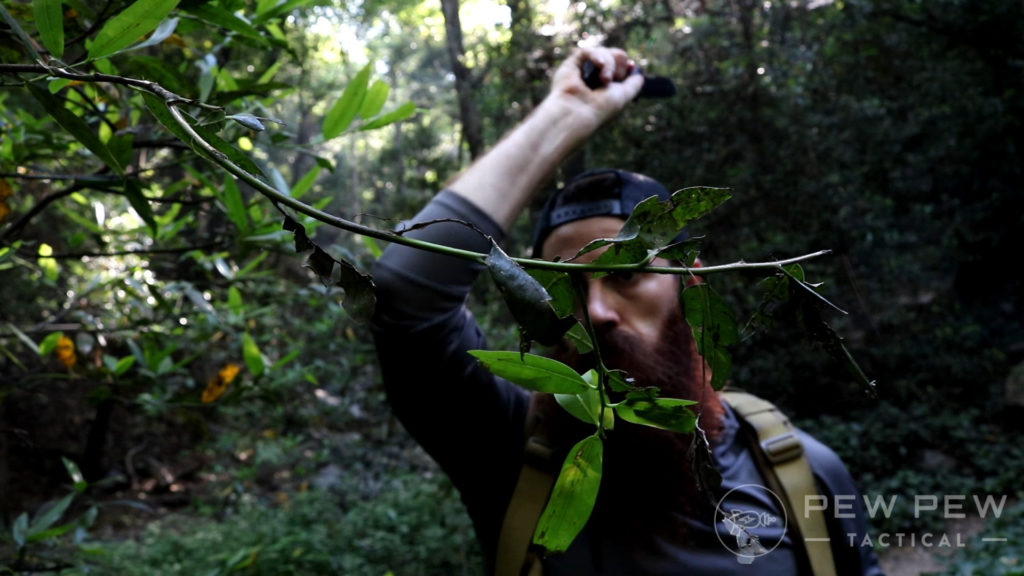
Making traps, skinning game, filleting fish, cutting paracord, making bandages, and crafting a shelter are but a few of the benefits derived from carrying a knife out in the woods.
So, make sure that you have one.

7. Have a Weapon
You may want to consider your local laws on this one — as everywhere is different — but I highly recommend traveling with a weapon of some sort.
There are weirdos out in the woods, too, and fighting off rabid bobcats with your hands doesn’t sound fun to me.
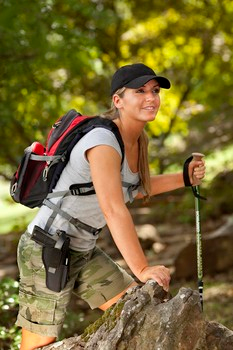
In case you think I’m fearmongering, just know that within the past 10 years, we’ve witnessed: a man attacking people on the Appalachian Trail with a machete, murders on various trails, clowns in the woods, bobcats attacking people, cougar attacks, and much more.
If you’re looking for more information on the legality of carrying within a National Park, check out our article here.
8. Carry Some Means of Water Purification
To go out into the woods without some means of purifying water is just plain stupid.
Water is essential to life, and if you attempt to drink straight out of a stream or creek, you’re virtually guaranteed to end up with a debilitating form of diarrhea.
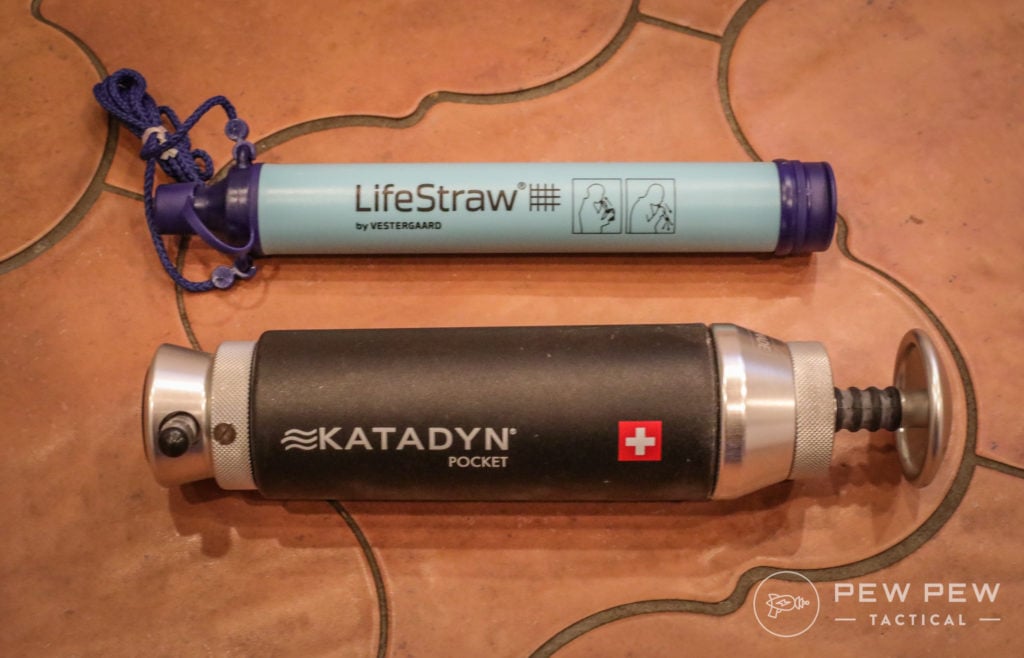
And that makes a bad situation much, much worse.
Besides, who wants to hike out to safety with brown pants?
No, it’s best to have some means of preventing such from ever happening in the first place. There are several convenient, light, and non-expensive means of doing such.
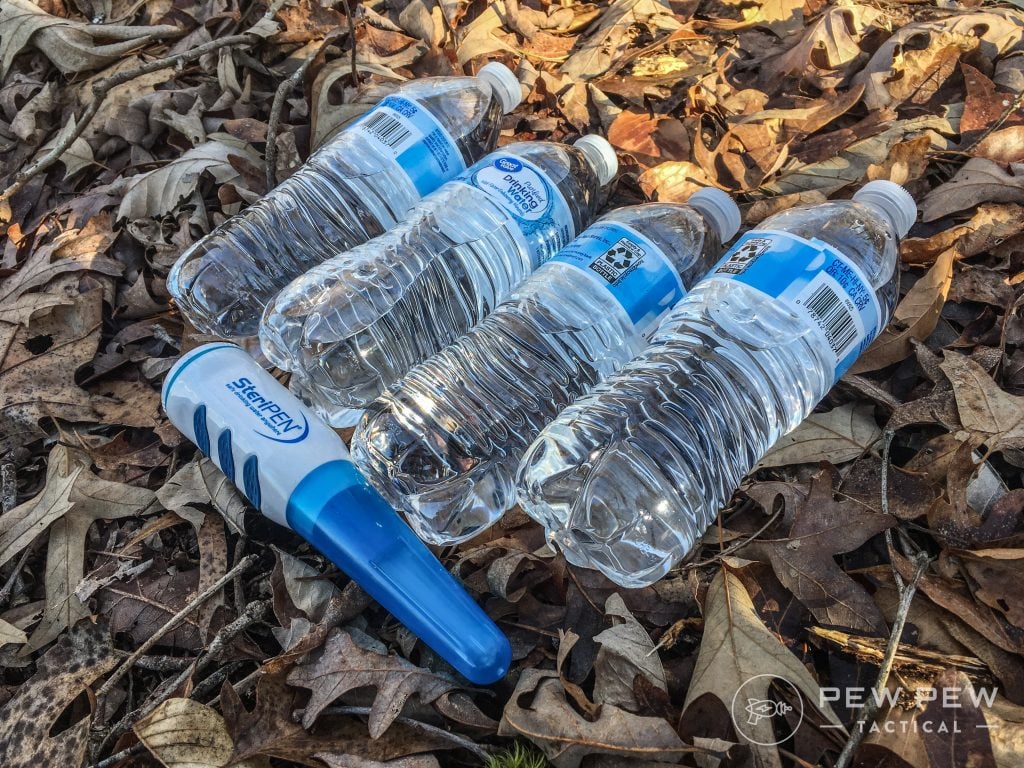
I personally prefer a SteriPen to purify my water, but a much more affordable option would be to take a LifeStraw out into the woods with you.
At roughly $25, here’s simply no reason not to have one of these on your person.
Prices accurate at time of writing
Prices accurate at time of writing
You can read all about hiking and water purification in our article here!
9. Know How to Read a Map
Another requirement for hiking — carrying a high-quality topographic map of the region you’re traveling through.
Not only does this make the hike much more interesting (you’re able to determine just what exactly you’re looking at in the distance), but it also provides an incredible level of safety should you get lost.
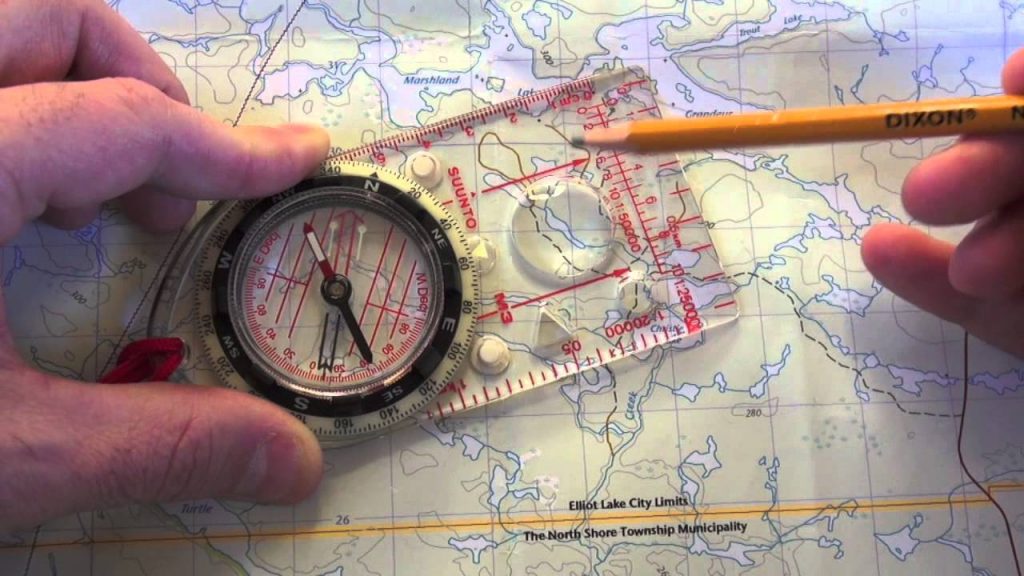
However, you first must know how to read a map, which is fast becoming a forgotten skill set.
I consider the best maps on the market to be the National Geographic topo maps. They’re waterproof, beautiful, pretty tough, and pack down really well.
Prices accurate at time of writing
Prices accurate at time of writing
Having one of these on your person and having watched a couple of YouTube videos on reading a topo map will serve you well for the rest of your life.
10. Know When It’s Hunting Season
Did you know that a lot of national parks actually allow hunting on them?
There’s nothing quite like being mistaken for a deer during rifle season. On the plus side, getting hit with a rifle round is a great way to lose weight!
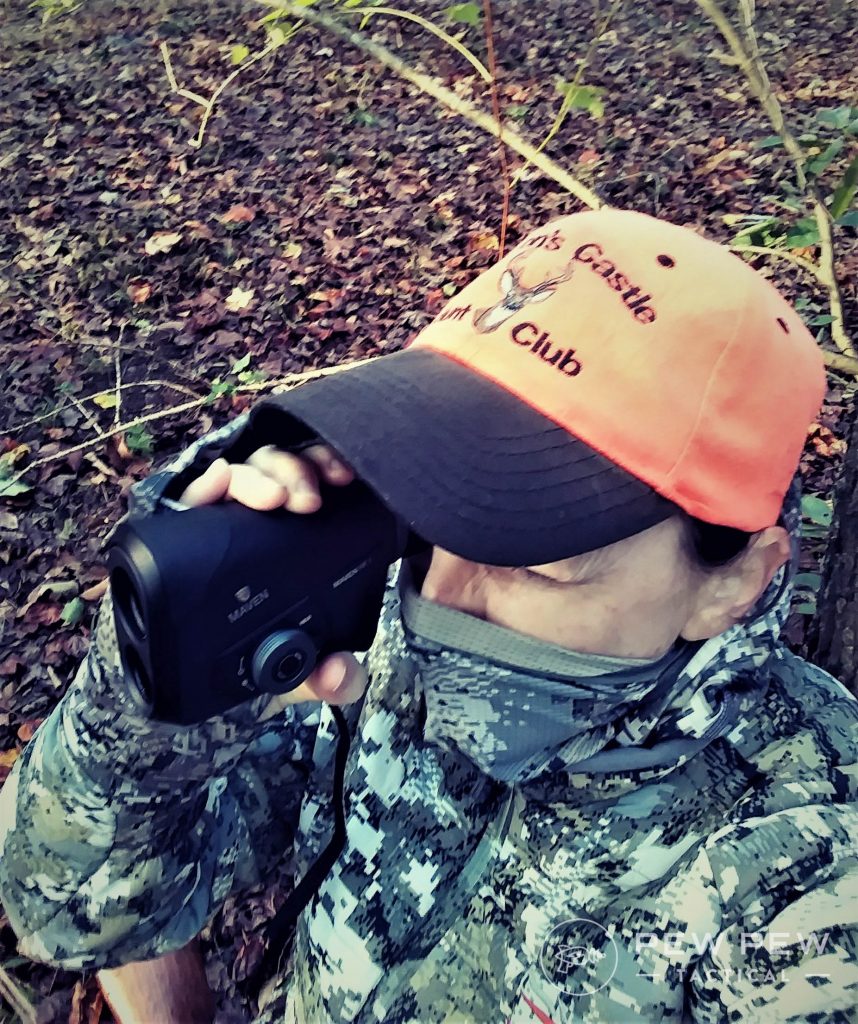
However, if that’s not your preferred method of weight loss, I highly recommend knowing when hunting season is in your area.
Figure out where people are likely to be hunting and make sure to wear blaze orange, stick to the trail, and make noise as you hike.
11. Avoid Thunderstorms Like the Plague
Lightning is a lot more terrifying when you don’t have a house to run into.
Surprise turns in the weather have suddenly caught me unaware at the peak of a mountain in the middle of a thunderstorm in the past.

If such should happen to you, you need to do everything in your power to descend the mountain and get away from tall objects as fast as possible. Your life truly could depend upon it.
Don’t shelter underneath a tree or in a cave either.
A tree is a natural lightning rod as it is, and if you shelter in a cave, lightning can easily travel through the rock and blow you away.

If you have no other options for shelter (e.g., a trail shelter) and you must find some way to ride the storm out while you’re out in it, you should do the following:
- Find a low-lying area and get in it. Whether this is a hollow, ditch, or root hole doesn’t matter. You just need to not be the tallest thing around.
- Take off your pack, put it on the ground, and then crouch down on it. You don’t want to lay down on the ground as lightning could easily travel through the wet earth to get to you. By crouching into a little ball while standing on your pack, you help to insulate yourself against ground-traveling electricity as much as possible.
12. Don’t Camp Near Roads
Aside from the noise disturbances, camping near a road brings the possibility for somebody to walk up to your tent in the middle of the night.
Call me paranoid, but I purposefully plan to spend the night as far away from any nearby road as possible when I go backpacking into the woods.
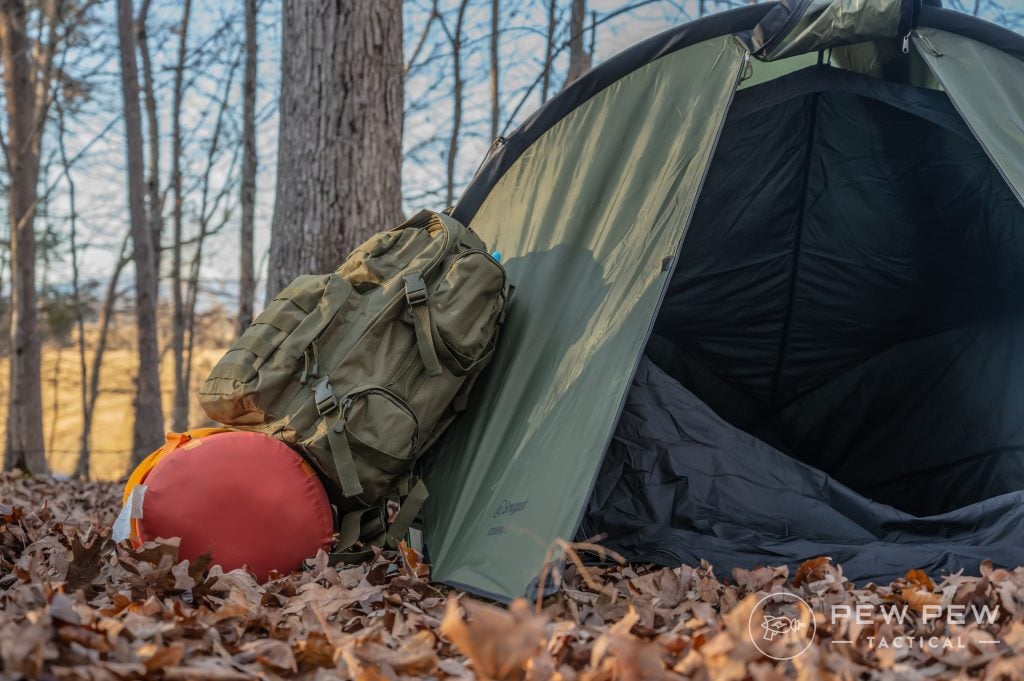
We’ve had some murders just off the road in the mountains, and I guess they’ve always stuck with me.
It’s because of this that I make my tent as difficult to find for some serial killer taking an evening stroll.
Part of this is choosing a tent color that blends in with your surroundings. I highly recommend the Snugpack Scorpion 2 in part for this reason — in other part because it straight up rocks.
Prices accurate at time of writing
Prices accurate at time of writing
13. Don’t Tell Strangers Your Plans
By this point, you probably don’t post to social media that you’re on vacation at the beach while you’re on vacation at the beach.
Why? Because it tells the whole world that you’re not at home!
In the same vein, you’re going to want to avoid telling strangers your plans while you’re out on the trail.

Letting somebody who you’ve never met in on the details of where you plan to sleep – in the middle of the woods with nobody else around – is probably a bad idea. Just sayin’.
Conclusion
I don’t want you to walk away from this article with the idea that hopping onto a trail in the woods is the beginning of a death trap. It’s not.
Instead, I want to help you provide a layer of security while you hike.
As such, it only makes sense to do what we can to mitigate the risk that we’ll face things happen.
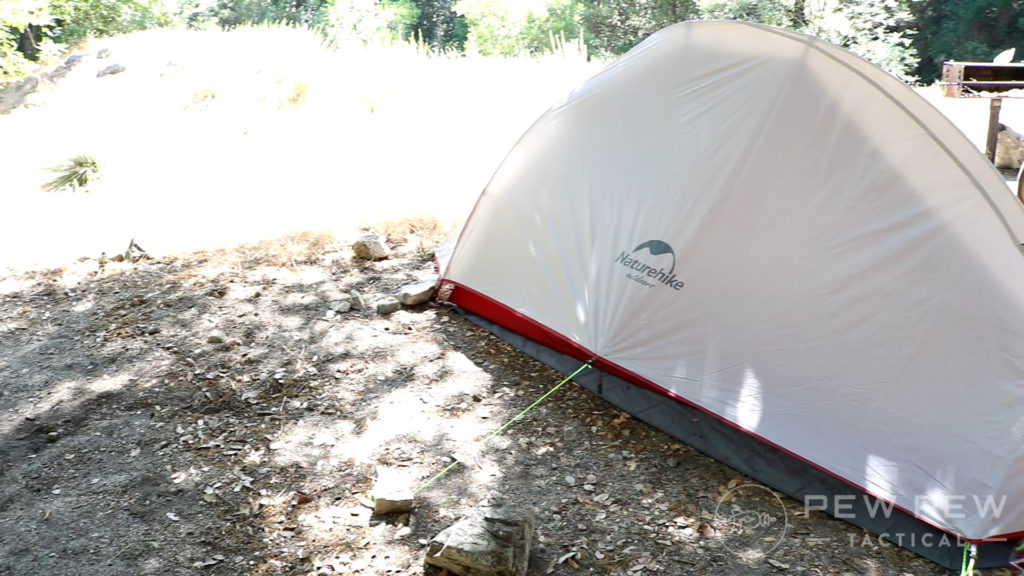
Our list truly isn’t difficult to follow and is most certainly not expensive either. You most likely have all of the gear already that you would need, and the rest is just active decision-making.
So, do what you can to take care of yourself and your family while you’re out in the woods.
You’ll enjoy yourself more freely with the knowledge that you have the means to take care of yourself should things go south.
Are there other ways to improve your safety? Let us know in the comments below! Ready to gear up? Check out our guides on the Best Portable Water Filters for Survival & Hiking and Best .410 Revolvers Perfect for Hiking.
The post Hiking Survival: 13 Ways to Stay Alive in the Woods appeared first on Pew Pew Tactical.
Pew Pew Tactical